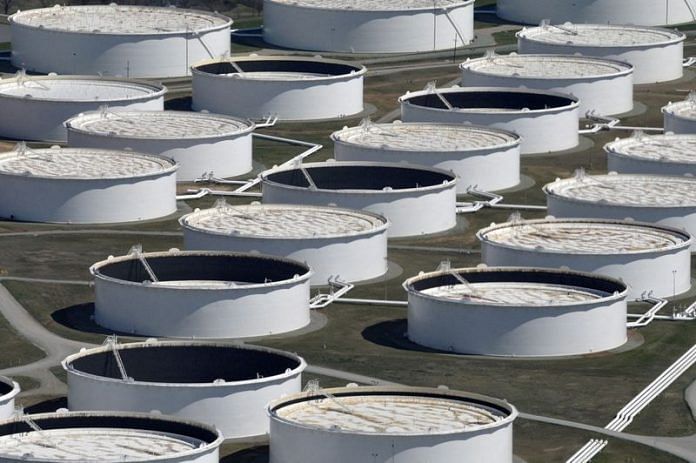By Nicole Jao
New York (Reuters) -Oil prices rose about 1% on Wednesday on worries about the conflict in the Middle East escalating.
Limiting gains, the United States reported increased crude stockpiles as demand worries stemming from gloomy economic prospects in Europe weigh.
Brent futures rose $1.07, or 1.21%, to $89.14 a barrel at 1:16 p.m. (1716 GMT). U.S. West Texas Intermediate (WTI) crude rose 69 cents to $83.74.
Weaker prices in the oil physical markets suggest the rise in prices over the past few weeks may come to an end as demand woes weigh.
U.S. crude inventories rose by 1.4 million barrels in the last week to 421.1 million barrels, the Energy Information Administration reported on Wednesday, higher than analysts’ expectations in a Reuters poll.
“The crude build is a bit of a surprise and gasoline demand is barely hanging in there,” said John Kilduff, a partner at Again Capital LLC, in New York.
U.S. inventories declined unexpectedly by about 2.7 million barrels in the week ended on Oct. 20, according to market sources citing American Petroleum Institute figures on Tuesday.[API/S]
“The European economic numbers haven’t been good, which could be affecting demand,” he added.
In Europe, growth indicators from industrial output data to purchasing managers’ surveys and sentiment readings in recent weeks are all suggesting that the euro zone’s economy is now either stagnating or even shrinking as weak external demand, consumer caution and high interest rates take their toll.
Bank lending across the euro zone came to a near standstill last month, European Central Bank data showed on Wednesday, providing further evidence that the 20-nation bloc was skirting a recession.
The conflict between Israel and Hamas raged on, raising concern that if it widened across the Middle East, oil supplies could be disrupted in a market already undersupplied given protracted OPEC+ cuts.
“The EIA report wasn’t quite as bullish as the API,” Price Futures analyst Phil Flynn said. The flip flop on the market shows that traders are concerned the delayed invasion is still going to be a risk to oil supply, he noted.
Crude prices could also find support as the top parliament body in China, the world’s biggest oil importer, approved a bill to issue 1 trillion yuan ($137 billion) in sovereign bonds and allow local governments to issue new debt from their 2024 quota to boost the economy.
But demand for crude oil in China could be limited as Beijing put a ceiling for its oil refining capacity at 1 billion metric tons by 2025 to streamline its vast oil processing sector and curb carbon emissions.
(Reporting by Nicole Jao in New York; Additional reporting by Natalie Grover, Stephanie Kelly, Laura Sanicola and Muyu Yu; Editing by Mark Potter and Mike Harrison)
Disclaimer: This report is auto generated from the Reuters news service. ThePrint holds no responsibilty for its content.



